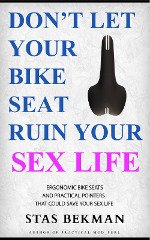Glencoe
Description
This section is from "The American Cyclopaedia", by George Ripley And Charles A. Dana. Also available from Amazon: The New American Cyclopędia. 16 volumes complete..
Glencoe
Glencoe one of the wildest and most gloomy of the Scottish glens, in the district of Lorn, Argyleshire, about 10 m. long, and enclosed by lofty mountains. The lower part of the glen near Loch Leven is cultivated and wooded, but the upper part is exceedingly rugged and barren, the mountains rising almost perpendicularly in fantastic forms, seamed with deep furrows worn by the winter torrents. A small lake, from which issues the Cona, lies in the middle of the valley. The path through the glen is lined by immense masses of rock. Near its N. W. extremity is the scene of the "massacre of Glencoe." After the revolution of 1688 many of the Scottish clans continued in arms for King James against King William. In August, 1691, the government of William issued a proclamation offering an amnesty to such insurgents as should take the oath of allegiance on or before Dec. 31. All the chiefs submitted within the prescribed time except the aged Maclan or Macdonald of Glencoe, whose tribe, a few hundred in number, inhabited this secluded valley.
On Dec. 31 he went to Fort William and offered to take the oath; but the colonel in command, not being a magistrate, could not administer the oath, and referred the chief to the sheriff at Inverary, before whom Macdonald took the oath, on Jan. 6, 1692. The earls of Breadalbane and Argyll, and the master of Stair, who were then in London, determined to avail themselves of this unintentional delay to effect the destruction of the tribe of Macdonald, to whom Argyll and Breadalbane were hereditary enemies. The master of Stair was secretary of state for Scotland, and by representing to William that Glencoe had not submitted, and that the dwellers in the valley, whom he described as a band of robbers, were the only remaining obstacle to the complete pacification of the highlands, he obtained an order for their extirpation. It was executed with horrible treachery and cruelty. On Feb. 1 a body of 120 soldiers, commanded by Campbell of Glenlyon, was sent to occupy Glencoe. Professing peace and friendship, they were received with the kindest hospitality, and for nearly a fortnight lived at free quarters in the utmost familiarity with the people. On the evening of Feb. 12 the officers supped at Macdonald's house. That same night the massacre was begun.
Macdonald and two of his attendants were murdered, and his wife received such barbarous treatment that she died the next day. About 40 persons were killed that night. Detachments of soldiers were sent to guard the outlets of the valley; but they arrived too late, and many of the inhabitants escaped half naked to the mountains, where a considerable number of the women and children perished of cold and hunger. In the morning the assassins set the village on fire, and took away with them all the flocks and herds of the valley. No punishment was inflicted on the authors of this crime. A graphic account of the massacre of Glencoe is given by Macaulay in his "History of England," vol. iv., exonerating King William. Other able writers inculpate him, and the question has been very warmly debated.

Pass of Glencoe.
Continue to:


